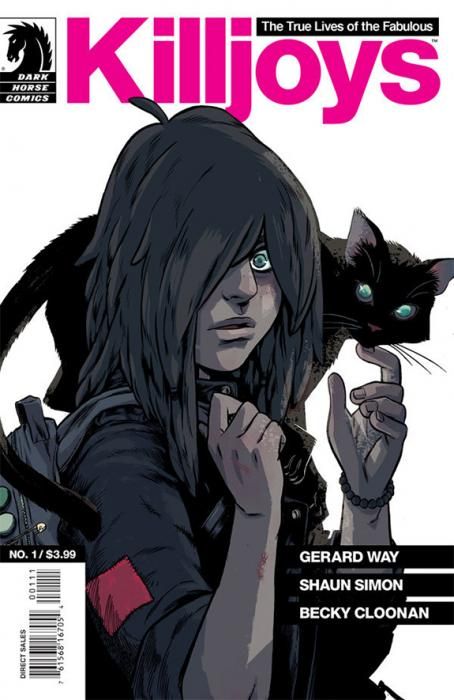Gerard Way has always been a proponent of style as substance. From his now-defunct band My Chemical Romance to his breakout comics hit "The Umbrella Academy," as much importance was placed on looking good and being clever as on any serious depth. That hasn't changed in his new series "The True Lives of the Fabulous Killjoys," co-written with Shaun Simon with art by Becky Cloonan.
"Killjoys" picks up the story of My Chemical Romance's 2010 album "Danger Days: The True Lives of the Fabulous Killjoys," a post-apocalyptic concept record about a band of candy-colored heroes fighting the black-and-white forces of corporate evil. "Umbrella Academy" was kin to their previous album (and musical breakout smash) "The Black Parade" in its stylish neo-Victorian excess, so it's appropriate that like "Danger Days," follow-up comic "Killjoys" doesn't hit with quite the impact of its predecessor. "Umbrella Academy" was a tour-de-force, a surprising statement of writerly talent flagrantly displayed, instantly catapulting Way to the top of the comics world as "Black Parade" had put MCR at the top of the rock world.
Instead, "Killjoys" #1 is more of a slow-burn beginning. It carries over many of the motifs of the record, including "The Warriors"-esque radio D.J. commentary and brightly-colored anti-establishment heroes (in the case of the comic, set twelve years later, inspired by the sacrifice of the original Killjoys). Way has clearly done plenty of world-building for his Battery City and environs, and it's doled out in a natural way-- one trick Way likes is to use a term or concept without explanation, only to have it clarified a few pages later.
But again, the depth of "Umbrella Academy" is missing to an extent-- the incredible mysteries that drove that book don't seem to be here, as we quickly put together the pieces of the world, with decades of post-apocalyptic media tropes as our glue. By the end of the comic, there isn't a clear focus -- we have a main character, but she shares screen time with some sex robots and gang of would-be Killjoys, still fighting the good fight. Our heroine's goal is obviously survival, but survival seems to entail not much more than wandering in the desert getting into trouble. As of yet there's no real reason to pick up the next issue -- no obvious goal we're aiming for.
That said, the book is certainly fun to read, and Way's dialogue and pacing is as snappy as always. Ditto Becky Cloonan's art, which walks the line between her indie origins and a modern manga vibe. The Blade Runner design of Battery City is especially evocative, as are the stylish punk designs of the Ultra V's gang. Her lines are generally clean but become heavy and scratchy where they need to be, out in the blasted desert. Dan Jackson's flat, simple colors are extremely reminiscent of Mike Allred, whose "Red Rocket 7" seems like a huge influence here.
Overall, even if "The True Lives of the Fabulous Killjoys" #1 doesn't have the "holy crap" impact of the debut issue of "Umbrella Academy," it certainly shows promise. There's clearly depth here; it just has yet to be plumbed for anything more than a quick look at a post-apoc world that's not too different from anything that's been seen before. Way and Cloonan are both stylish as hell, though -- it just remains to be seen how long style can survive without substance, or whether there's real substance waiting just beneath the slick candy surface.

